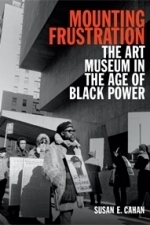
Skymet Weather
Weather
App
Skymet Weather app is your all-in-one screen for accurate and timely weather forecasts, news and...

Daddy's Little Helper
Games and Entertainment
App
~~> Silly Daddy can't get anything right! Help Daddy clean up & organize the house! ~~> Be the best...

123 Kids Fun EDUCATION Math & Alphabet Cool Games
Games and Education
App
123 Kids Fun EDUCATION - Free Educational Games for Preschool Kids and Toddlers including counting,...

French English Dictionary +
Travel and Reference
App
The #1 French English Dictionary for iPhone, iPad & iPod touch - Offline Dictionary with over...

High School Bus Driving Simulator – 3D Pick & Drop
Games and Entertainment
App
Be a bus driver & take kids to school in this school bus driving simulation game. Are you a fan of...

Mounting Frustration: The Art Museum in the Age of Black Power
Book
Prior to 1967 fewer than a dozen museum exhibitions had featured the work of African American...
Art social issues politics

Look and Find® Elmo on Sesame Street
Games and Book
App
This is an interactive games app, which will help teach your child observation and memory skills in...

THE LEGO® NINJAGO® MOVIE™ app
Games
App
FUN, ACTION-PACKED NINJA RPG GAME THE LEGO® NINJAGO® MOVIE™ app is a fun, creative role-playing...

Retro Gamer Magazine: First for classic videogames
Book and Magazines & Newspapers
App
Retro Gamer is the only magazine in the UK that’s fully dedicated to the halcyon days of classic...
